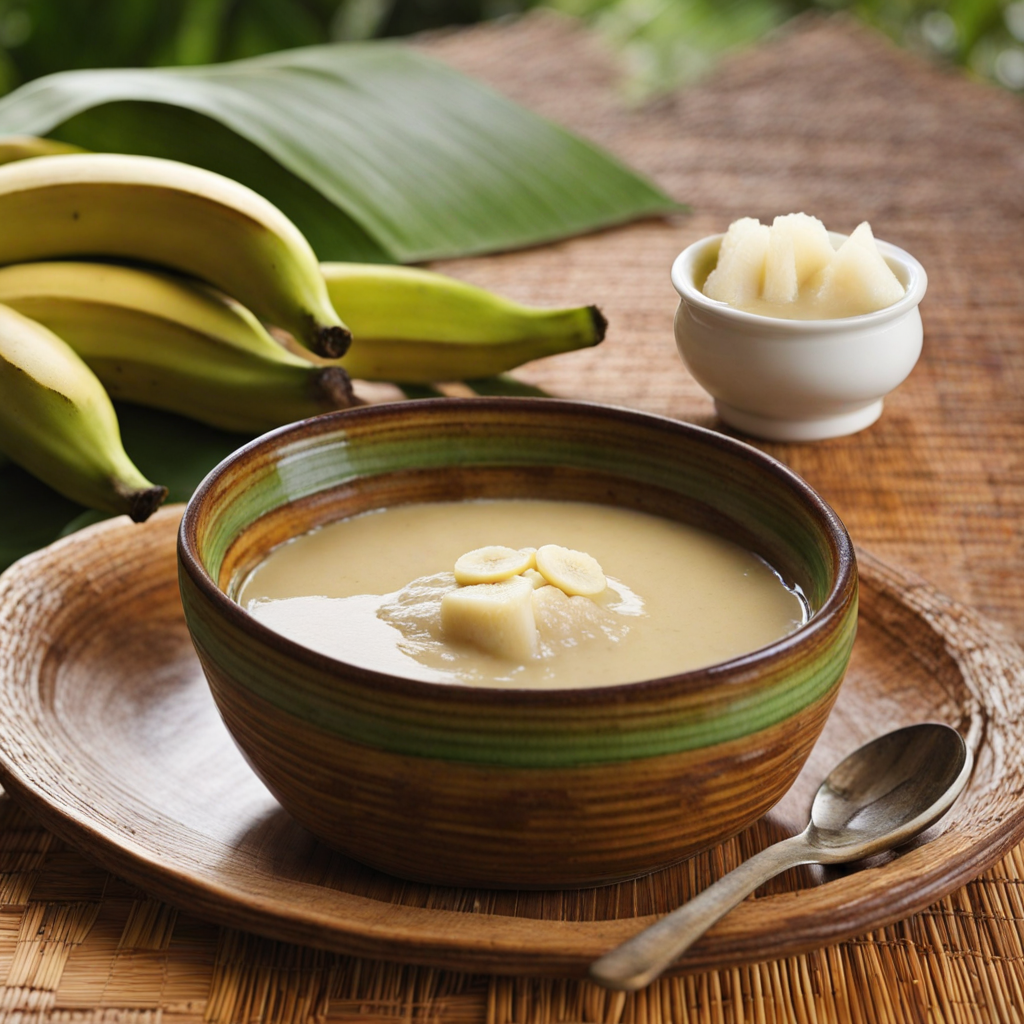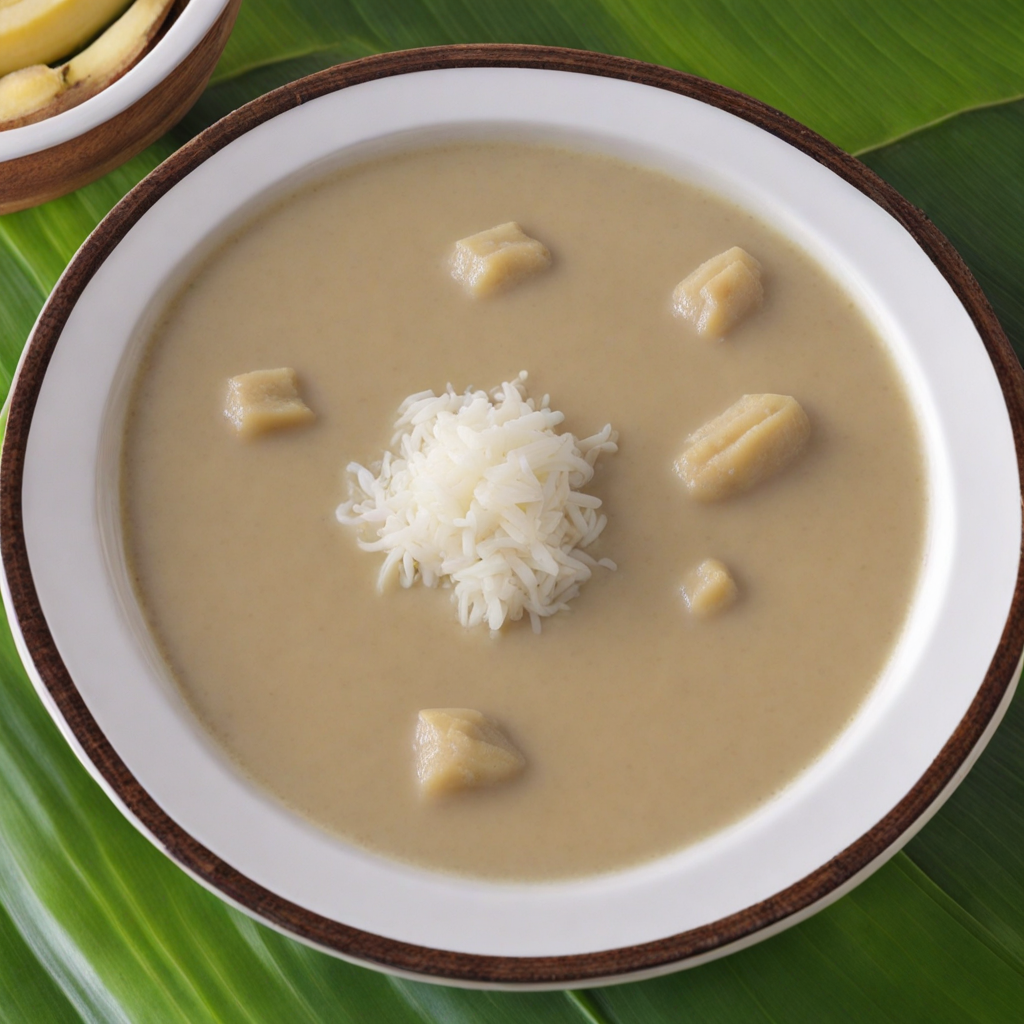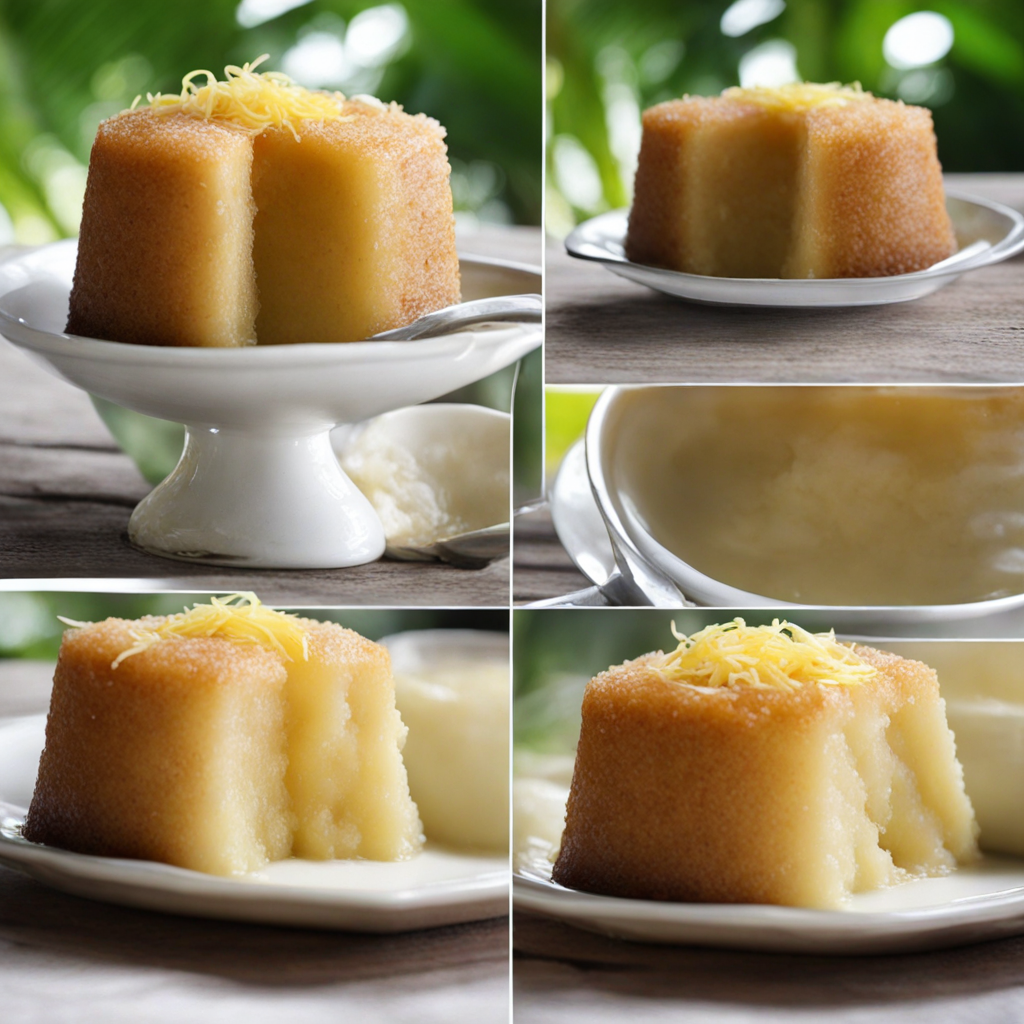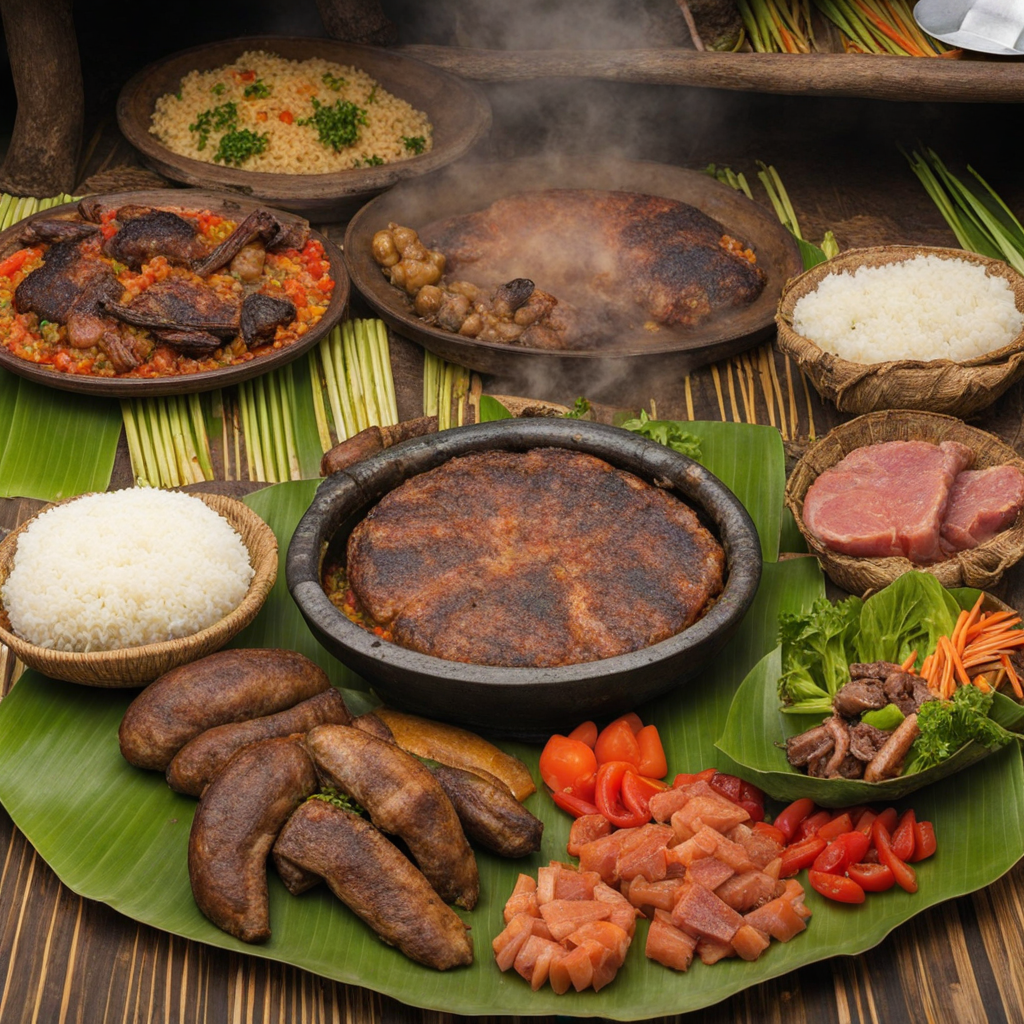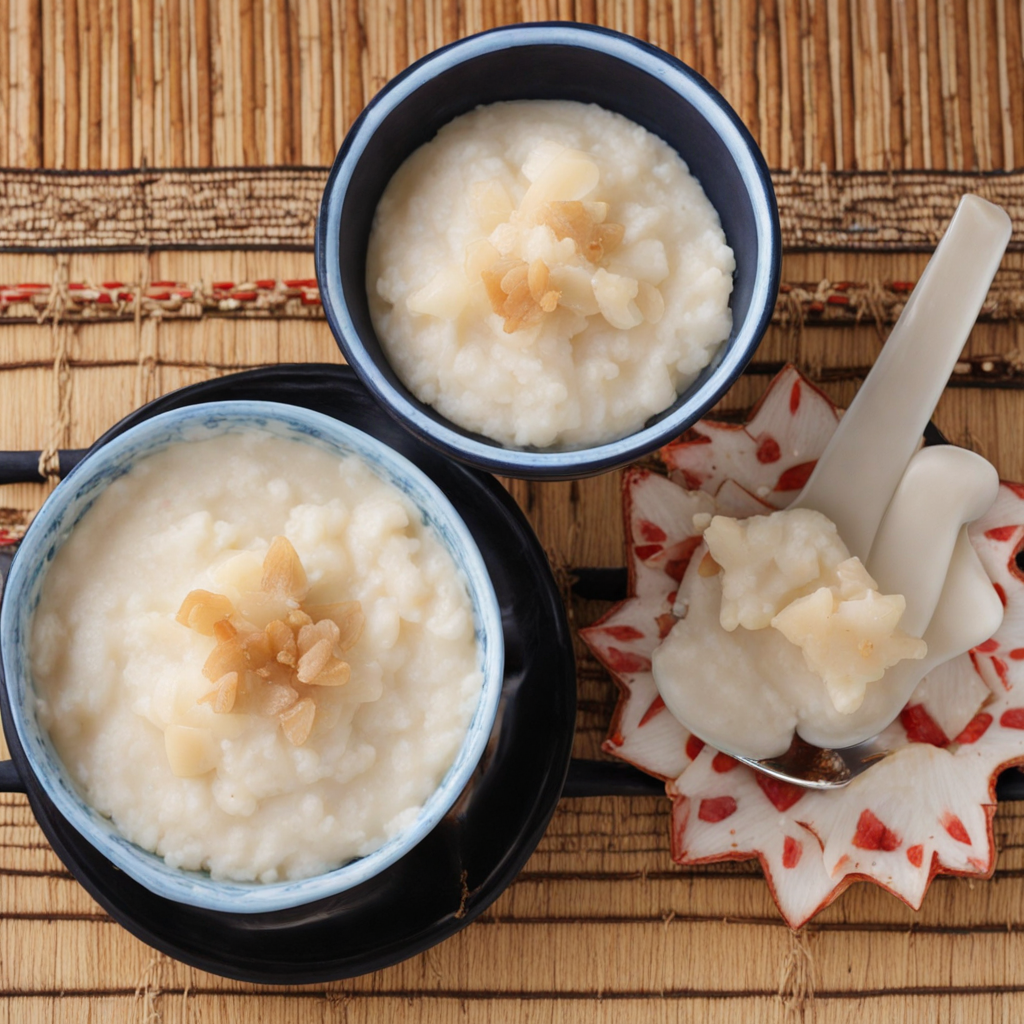Sua Fa'i
Sua Fa'i is a delightful Samoan dish that beautifully reflects the island's bountiful natural resources and rich culinary traditions. This dish primarily consists of ripe bananas, which are a staple in Samoan cuisine. The bananas are typically boiled or steamed until they achieve a tender, creamy texture. The subtle sweetness of the fruit is brought to life with the addition of coconut cream, which lends a rich, luscious quality that complements the bananas perfectly. This combination creates a comforting and satisfying dish that is both simple and delicious, making it a popular choice among locals and visitors alike. The preparation of Sua Fa'i is often imbued with a sense of communal sharing, as families gather together to enjoy this dish. The bananas are sometimes served with freshly grated coconut on top, enhancing the flavor and adding a delightful nuttiness. The dish can be enjoyed warm or at room temperature, making it versatile for any occasion, whether it’s a casual family meal or a festive gathering. The vibrant taste of Sua Fa'i is a testament to the Samoan philosophy of ‘fa’a Samoa,’ which emphasizes freshness, simplicity, and harmony with nature. When you take a bite of Sua Fa'i, you are greeted with a wonderful balance of flavors and textures. The softness of the bananas melds seamlessly with the creamy coconut, creating a mouthwatering experience that is both comforting and indulgent. This dish not only showcases the natural sweetness of the bananas but also embodies the spirit of Samoa, where food is often a celebration of life and community. For anyone looking to explore new flavors, Sua Fa'i offers a unique glimpse into the heart of Samoan cuisine, inviting you to savor the simple joys of island life.
How It Became This Dish
The Culinary Journey of Sua Fa'i: A Samoan Delight Sua Fa'i, a traditional dish from Samoa, is a delightful blend of flavors, history, and cultural significance that reflects the island's rich culinary heritage. This dish, often referred to as a coconut cream pudding, is not only a tantalizing treat but also a testament to the communal spirit and agricultural abundance of the Samoan people. To understand Sua Fa'i, one must delve into its origins, cultural importance, and its evolution through time. Origins: The Roots of Sua Fa'i The history of Sua Fa'i is intertwined with the agricultural practices and resources of Samoa. The dish primarily consists of taro, a starchy root vegetable that has been cultivated in the Pacific Islands for thousands of years. Taro holds immense significance in Samoan culture, often referred to as the "staff of life." It is thought to have been one of the first cultivated crops, introduced to Polynesia by early settlers who brought their agricultural knowledge and traditions from Southeast Asia. Coconut is another key ingredient in Sua Fa'i, representing the duality of the Samoan lifestyle—where the land and sea provide sustenance. Coconuts have been utilized in numerous ways, from providing drinking water to being a source of oil and milk. The use of coconut in Sua Fa'i exemplifies the resourcefulness of the Samoan people and their deep connection to the environment. Cultural Significance: More Than Just a Dish Sua Fa'i is not merely a food item; it embodies the spirit of Samoan hospitality and communal living. Traditionally, the preparation of this dish is a collective effort, often brought to life during family gatherings, celebrations, and feasts known as “fa'avae.” These occasions emphasize togetherness and the sharing of food, reinforcing bonds within the community. The dish also holds ceremonial significance. It is often prepared for special occasions, such as weddings, birthdays, and cultural festivals. Sua Fa'i serves as a symbol of abundance and generosity, characteristics highly valued in Samoan society. Its presence at communal feasts underscores the importance of sharing resources and celebrating together, reflecting the social fabric of Samoan life. In addition to its role in communal gatherings, Sua Fa'i is often passed down through generations, serving as a culinary legacy. Elders teach younger family members how to prepare the dish, ensuring that traditional methods and recipes are preserved. This transmission of knowledge highlights the importance of family and the role of food in maintaining cultural identity. Development Over Time: A Culinary Evolution As Samoa’s culinary landscape evolved, so too did the preparation and presentation of Sua Fa'i. Initially, Sua Fa'i was a simple dish made with basic ingredients. However, with the introduction of new cooking techniques and ingredients from various cultures, the dish began to take on a more diverse character. In the 19th and 20th centuries, Samoa experienced significant cultural exchange due to European contact, missionary influence, and globalization. These interactions brought new ingredients and cooking methods, leading to variations of Sua Fa'i. For example, while the traditional recipe primarily uses taro and coconut milk, modern adaptations may incorporate different flavors, such as vanilla, sugar, or even tropical fruits, enriching the dish's profile. The introduction of baking, which became more common with the arrival of Western culinary practices, also transformed how Sua Fa'i is prepared. Instead of solely steaming or boiling, contemporary versions may be baked, resulting in a different texture and taste, appealing to both local and international palates. Despite these changes, the essence of Sua Fa'i remains intact. It continues to symbolize the resilience of Samoan culture and its ability to adapt while maintaining core values. The dish has also gained recognition beyond Samoa, often featured in Polynesian restaurants and culinary events worldwide, showcasing the island's vibrant food culture. Contemporary Relevance: Sua Fa’i in Today's Samoa In modern Samoa, Sua Fa'i remains a beloved dish, enjoyed not only during special occasions but also as a comforting everyday food. The resurgence of interest in traditional foods, driven by a global movement towards sustainability and local sourcing, has led to a renewed appreciation for Sua Fa'i. Many young Samoans are embracing their culinary heritage, reviving traditional recipes and practices while incorporating modern twists. With the rise of social media, Sua Fa'i has found a new platform for visibility. Food bloggers and influencers share their versions of the dish, reaching wider audiences and encouraging a new generation to explore their cultural roots. This digital age allows for a fusion of traditional and contemporary culinary arts, enabling Sua Fa'i to evolve while preserving its significance. Moreover, Sua Fa'i plays a role in promoting local agriculture. As the demand for traditional ingredients increases, farmers are encouraged to cultivate taro and coconuts sustainably, contributing to the local economy and food security. This connection between food and agriculture highlights the importance of ethical consumption and supports the preservation of Samoa’s natural resources. Conclusion: A Dish That Unites Sua Fa'i is more than just a dish; it is a narrative that encapsulates the essence of Samoan culture. From its roots in ancient agricultural practices to its role in contemporary society, Sua Fa'i is a reflection of the Samoan people's resilience, creativity, and communal spirit. As it continues to evolve and adapt, this delectable coconut cream pudding remains a cherished symbol of identity, heritage, and unity within the vibrant tapestry of Samoan life. Whether enjoyed at a family gathering, a cultural celebration, or a quiet moment at home, Sua Fa'i serves as a reminder of the rich history and enduring traditions that define Samoa.
You may like
Discover local flavors from Samoa


